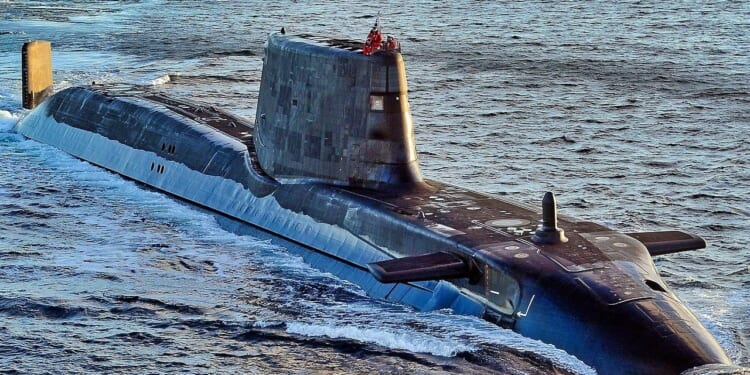HMS Agamemnon joins the Royal Navy as tensions with Russia in Europe remain high.
This week, the Royal Navy commissioned its latest nuclear-powered submarine.
On Monday, King Charles III welcomed HMS Agamemnon into the Royal Navy.
HMS Agamemnon
The newest sub in service of the Royal Navy is part of the Astute class of fast attack submarines.
Fast attack submarines, like the HMS Agamemnon, are designed to wreak havoc on enemy shipping during wartime, as well as provide key intelligence to military commanders and policymakers.
The ceremony took place at the BAE Systems facility in Barrow-in-Furness, in Western England.
HMS Agamemnon will now undergo extensive sea trials before it is considered to be fully operational and deploys around the world in support of Royal Navy and NATO operations.
“Once operational, Agamemnon’s mission will be both sword and shield of the Fleet, protecting the nuclear deterrent, carrier strike groups and critical underwater infrastructure, and striking foes where necessary with Spearfish torpedoes against hostile surface vessels and submarines, or Tomahawk cruise missiles to hit land targets up to 1,000 miles away,” the Royal Navy stated about its newest submarine.
The Royal Navy is further modernizing its submarine fleet with the addition of four Dreadnought-class nuclear-powered submarines that will also carry nuclear warheads. Unlike the HMS Agamemnon and its sister subs, the Dreadnought-class vessels will assume the maritime nuclear deterrence mantle and carry nuclear missiles.
Since their widespread introduction in World War I, submarines have become key components of a well-rounded naval fleet. During the Falklands War in 1982, the HMS Conqueror sank the Argentine battle cruiser ARA General Belgrano, marking one of the biggest submarine successes since the end of World War II.
Today, submarines are designed and equipped to go beyond attacks on enemy surface combatants and merchant vessels. Some classes of submarines are equipped with ballistic and cruise missiles that can strike land targets thousands of miles away. For example, during the recent attack on Iran’s nuclear program, a US Navy submarine leveled an Iranian nuclear facility with a salvo of Tomahawk cruise missiles. Moreover, certain types of subs are designed to carry nuclear weapons, serving as their countries’ ultimate line of defense.
Astute Submarines
Submarines of the class are equipped with six 533mm torpedo tubes, which can fire Spearfish heavy torpedoes as well as Tomahawk Block V cruise missiles.
London plans to have seven submarines of the class (HMS Astute, HMS Ambush, HMS Artful, HMS Audacious, HMS Anson, HMS Agamemnon, and HMS Achilles). However, the program is not moving very fast, thus resulting in a big gap between the first ship of the class, the HMS Astute, and the last, the HMS Achilles.
For example, the Royal Navy laid down HMS Astute in 2001 and commissioned the submarine in 2010. Conversely, the HMS Achilles was laid down in 2018 and is projected to enter service between 2028 and 2029. That is almost a 20-year gap between the two vessels, potentially resulting in different capabilities as technology has advanced rapidly since 2010.
The HMS Astute has had a rather dramatic history of service. In 2011, while the nuclear-powered submarine was docked in Southampton, Able Seaman Ryan Donovan shot and killed Lieutenant Commander Ian Molyneux and wounded several others in what was described by a judge as a “murderous onslaught.”
HMS Agamemnon joins the Royal Navy as tensions with Russia in Europe remain high, while China in the Indo-Pacific continues to present a geopolitical challenge.
About the Author: Stavros Atlamazoglou
Stavros Atlamazoglou is a seasoned defense journalist specializing in special operations and a Hellenic Army veteran (national service with the 575th Marine Battalion and Army HQ). He holds a BA from the Johns Hopkins University and an MA from the Johns Hopkins’ School of Advanced International Studies (SAIS). His work has been featured in Business Insider, Sandboxx, and SOFREP.
Image: Wikimedia Commons.


















